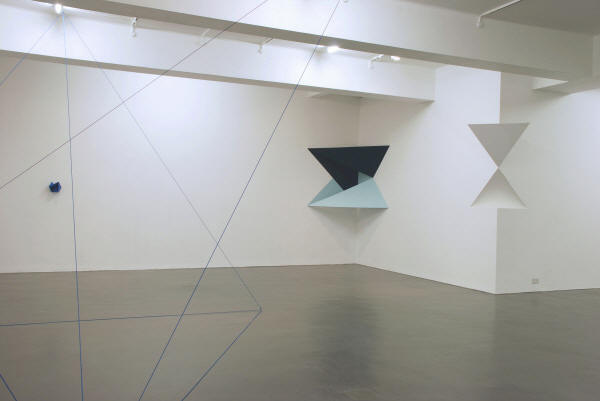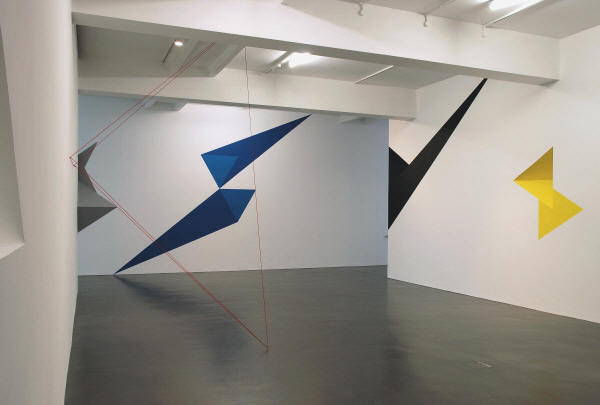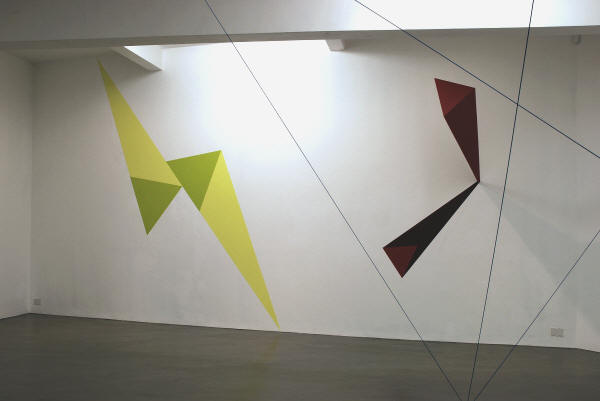|
|
| home | features | exhibitions | interviews | profiles | webprojects | gazetteer | links | archive | forum |
|
Perfect in the mind: a response to the sculptures of George Meyrick Fiona Robinson
“There is no perfect, it is unobtainable”, according to George Meyrick. His sculptures are hand-made and he sees their inaccuracies. Others see their exactness. For him “The pieces that really succeed are the ones that the viewers create in their minds: they will be utter perfection”.
The scale of Meyrick’s sculpture is domestic, he aims for “a modesty, a lightness of touch, a delicacy”. When he makes installations they are more expansive, they cut into the space and become an integral part of it. He has a simple direct approach to materials using what is readily available. An existing part of a structure, a simple form and imagination work together to make his point. He imagines that his pieces are buried within walls, indicated by a shape touching the surface but hidden inside. So the geometry of the perfect form is only complete when the viewer’s imagination takes the line on into the structure of the wall or the fabric of the building. It is not just a triangle painted on a wall. There is more to it than that. What is visible is incomplete.
Meyrick plans his work in sketchbooks. Small freehand triangles, he has always liked geometry, and coloured lines flow across the pages. Out of this chaos, he creates order. He paints precise coloured drawings using a mapping pen filling in the colour so it remains flat, unmarked.. Once he used blacks; gouache, acrylic and Indian ink, which relied on the play of light on their differing surfaces to suggest the illusion of three dimensions. Now he uses bright, clear hues. He makes card maquettes which hang from the studio ceiling or sit alongside each other on a deep shelf. Finally his sculptures are constructed out of birch-faced ply and then painted. The Henry Moore Institute in Leeds holds all his early sketchbooks and maquettes in their archive. His student ‘drawings’ consisting of wooden rods and shadows thrown by a light source had an elusive quality which is still evident in his current work. Solid triangles intersect corners or emerge from the surface of a wall and combine with an apparently three-dimensional form but which is actually a piece of flat painting. It is the illusion of solidity which makes them so intriguing. You can’t get them out of your mind. Meyrick’s installation, Plinth 2007, was shown in the Bournemouth University Art Collection 2007/2008 exhibition. It relates to his ‘Form from Form’ series which relocates a section of wall without adding any material. Essentially creating a sculpture from nothing.
Increasingly Meyrick’s installations are collaborative. From his ideas he creates a physical form but leaves the final version to be interpreted by the viewer. As with much art they need that perfect triangle of maker, art work and audience to make them complete. He does not use beautiful materials to produce a beautifully made product; his works are not objects to possess. For Meyrick the idea is what matters. He cites the Russian constructivists and the American Minimalist Robert Mangold as influences and he also talks about a “wonderful box” by Naum Gabo in the Tate: “It is looking quite battered now but you wouldn’t want to see it remade, you enjoy it as a battered object, but in my mind’s eye I see it as it was”. This is the key to Meyrick’s work, the importance of it remaining perfect in someone’s mind. © Fiona Robinson. 2012
|
|
|



